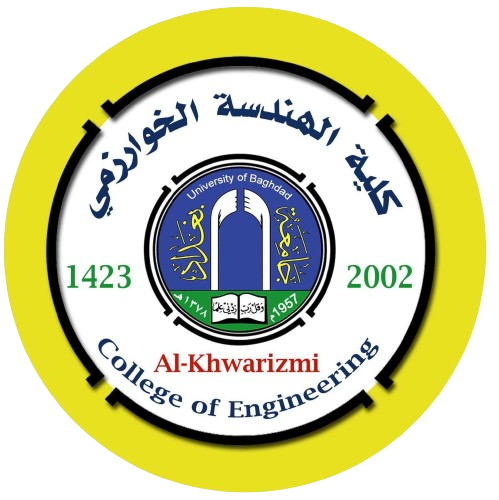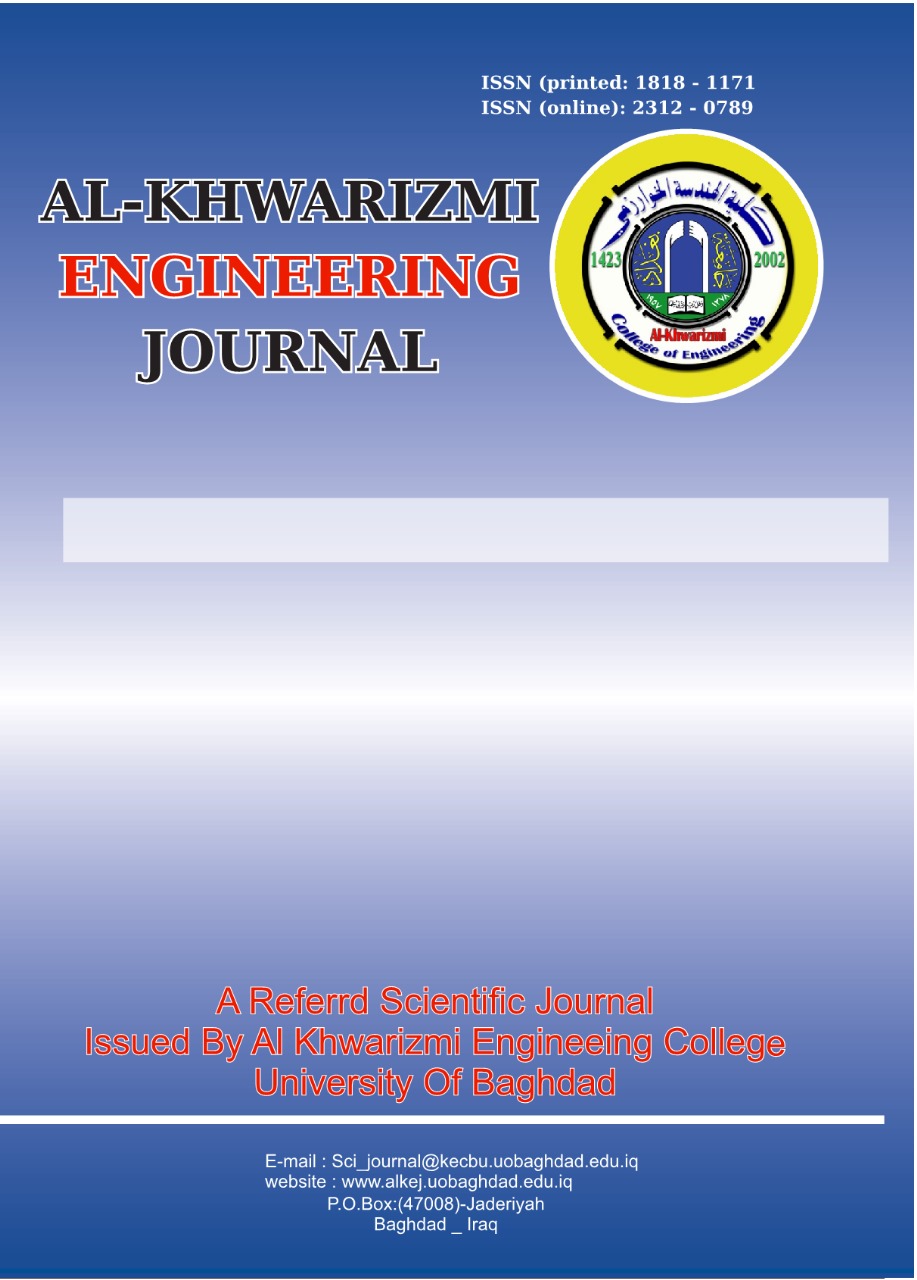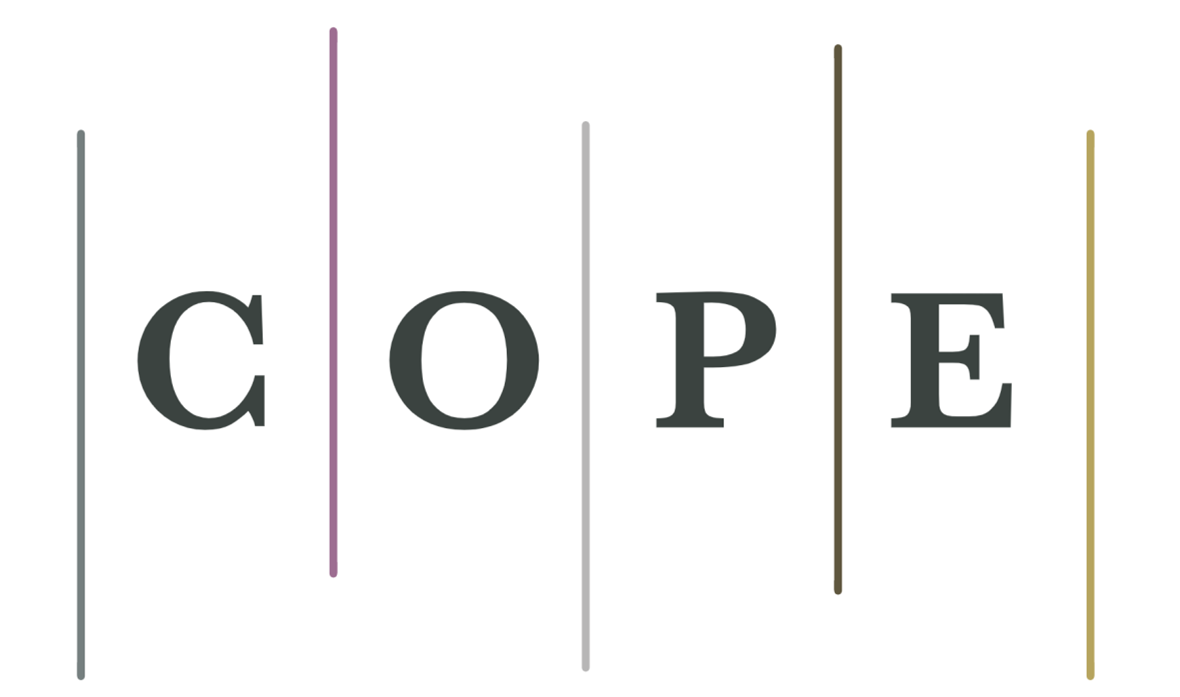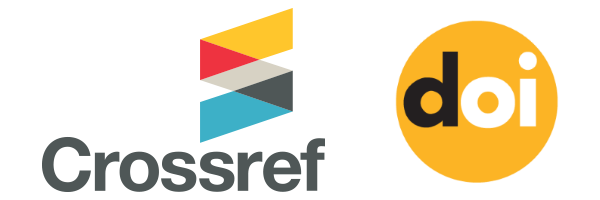التوجيه المستقل للمركبة على أساس ردود الفعل الخطيةوالتحكم في وضع الانزلاق
DOI:
https://doi.org/10.22153/kej.2025.05.002الكلمات المفتاحية:
Feedback Linearization, Robust control , SMC.الملخص
اقترحت هذه الورقة طريقة تحكم مثالية ومتينة للتحكم في سرعة النظام الدايناميكي للمركبة.الطريقة المقترحة تجمع بين متحكم الوضع المنزلق (SMC)وتقنية التغذية الراجعة الخطية (FB linearization).بسبب اللاخطية العالية للنموذج الديناميكي لنظام المركبة ,تم استخدام خطية التغذية الراجعة (FB Linearization)لتحويل النظام الديناميكي للمركبة الى نظام خطي. تم استخدام نظرية Lyapunovللموافقة على استقرار وحدة التحكم المقترحة . علاوة على ذلك تم استخدام وحدة تحكم PIDمع GAللمقارنة. تشير نتائج المحاكاة بشكل واضح الى ان الطريقة المقدمة يمكنها تحقيق أداء جيد بمتانة عالية ضد الاضطرابات الخارجية والانظمة الجامعة.
التنزيلات
المراجع
[1] M. Levantaci, E. Sabbioni, and M. Asperti, “Modelling and Validation of an Adaptive Cruise Control using a high fidelity Dynamic Driving Simulator” Tesi di LaureaMagistrale in Mechanical Engineering - IngegneriaMeccanica 2021.
[2] S. Shladover, “Connected and Automated Vehicle Systems: Introduction and Overview,” Journal of Intelligent Transportation Systems, vol. 22, pp. 00–00, May 2017, doi: 10.1080/15472450.2017.1336053
[3] D. Palac, I. D. Scully, R. K. Jonas, J. L. Campbell, D. Young, and D. M. Cades, "Advanced Driver Assistance Systems (ADAS): Who’s Driving What and What’s Driving Use?," *Proceedings of the Human Factors and Ergonomics Society Annual Meeting*, vol. 65, no. 1, pp. 1220–1224, Sep. 2021, doi: 10.1177/1071181321651234..
[4] S. K. Rao and T. N. Kesavamurthy, "A study on Advanced Driver Assistance Systems (ADAS)," *International Journal of Vehicle Structures & Systems*, vol. 9, no. 4, pp. 190-195, 2017, doi: 10.4273/ijvss.9.4.07.
[5] D. Wu et al., "Multi-objective dynamic coordinated Adaptive Cruise Control for intelligent electric vehicle with sensors fusion," *Mechanical Systems and Signal Processing*, vol. 209, p. 111125, Mar. 2024, doi: 10.1016/j.ymssp.2024.111125.
[6] D. Mohammed and B. Horváth, “Comparative Analysis of Following Distances in Different Adaptive Cruise Control Systems at Steady Speeds,” World Electric Vehicle Journal, vol. 15, no. 3, Art. no. 3, Mar. 2024, doi: 10.3390/wevj15030116.
[7] A. H. Mary, A. H. Miry, and M. H. Miry, "Design robust H∞-PID controller for a helicopter system using sequential quadratic programming algorithm," *Journal of the Chinese Institute of Engineers*, vol. 45, no. 8, pp. 688-696, 2022.
[8] A. Ghaffari, N. Ghadimi, and B. Shokri, "Adaptive cruise control with PID and MPC for distance and speed regulation in automated vehicles," IFAC-PapersOnLine, vol. 48, no. 3, pp. 64-69, 2015, doi: 10.1016/j.ifacol.2015.06.200.
[9] A. Musa et al., "A Review of Model Predictive Controls Applied to Advanced Driver-Assistance Systems," *Energies*, vol. 14, Nov. 2021, doi: 10.3390/en14237974.
[10] M. S. Ahmed, A. H. Mary, and H. H. Jasim, "Robust Computed Torque Control for Uncertain Robotic Manipulators," *Al-Khwarizmi Engineering Journal*, vol. 17, no. 3. pp. 22-28, 2021.
[11] W. Jiang, W. Zhang, and Y. Zhang, "A Fuzzy Logic Controller for adaptive cruise control system of electric vehicle," Proceedings of the IEEE International Conference on Mechatronics and Automation, pp. 509-514, 2016, doi: 10.1109/ICMA.2016.7558592.
[12] C. Jacobé de Naurois, C. Bourdin, C. Bougard, and J.-L. Vercher, “Adapting artificial neural networks to a specific driver enhances detection and prediction of drowsiness,” Accident Analysis & Prevention, vol. 121, pp. 118–128, Dec. 2018, doi: 10.1016/j.aap.2018.08.017.
[13] M. Miry, "Nonlinear state feedback controller combined with RBF for nonlinear underactuated overhead crane system," *Journal of Engineering Research*, vol. 9, no. 3A, 2021.
[14] L. Yu and R. Wang, "Researches on Adaptive Cruise Control system: A state of the art review," Journal of Automobile Engineering, vol. 236, no. 2-3, pp. 211-240, 2022, doi: 10.1177/09544070211019254.
[15] P. Mahadika, A. Subiantoro, and B. Kusumoputro, “Neural Network Predictive Control Approach Design for Adaptive Cruise Control,” International Journal of Technology, vol. 11, p. 1451, Dec. 2020, doi: 10.14716/ijtech.v11i7.4592.
[16] V. Oguntosin and J. Olasina, “Control Design and Analysis of Cruise Control System,” Journal of Research in Engineering and Applied Sciences, vol. 6, pp. 108–112, Jul. 2021, doi: 10.46565/jreas.2021.v06i03.001.
[17] V. Minh, R. Moezzi, J. Cýrus, and J. Hlava, “Model Predictive Control for Autonomous Driving Vehicles,” Electronics, vol. 10, p. 2593, Oct. 2021, doi: 10.3390/e
[18] R. Alika, E. M. Mellouli, and E. H. Tissir, "A modified sliding mode controller based on fuzzy logic to control the longitudinal dynamics of the autonomous vehicle," *Results in Engineering*, vol. 22, 2024.
[19] K. J. Åström and R. M. Murray, *Feedback Systems: An Introduction for Scientists and Engineers*, 2nd ed., Princeton, NJ: Princeton University Press, 2010, ch. 6, p. 225.
التنزيلات
منشور
إصدار
القسم
الرخصة
الحقوق الفكرية (c) 2025 مجلة الخوارزمي الهندسية

هذا العمل مرخص بموجب Creative Commons Attribution 4.0 International License.
حقوق الطبع والنشر: يحتفظ مؤلفو الوصول المفتوح بحقوق الطبع والنشر لاعمالهم، ويتم توزيع جميع مقالات الوصول المفتوح بموجب شروط ترخيص Creative Commons Attribution License، والتي تسمح بالاستخدام غير المقيد والتوزيع والاستنساخ في أي وسيط، بشرط ذكر العمل الأصلي بشكل صحيح. إن استخدام الأسماء الوصفیة العامة، والأسماء التجاریة، والعلامات التجاریة، وما إلی ذلك في ھذا المنشور، حتی وإن لم یتم تحدیدھ بشکل محدد، لا یعني أن ھذه الأسماء غیر محمیة بموجب القوانین واللوائح ذات الصلة. في حين يعتقد أن المشورة والمعلومات في هذه المجلة صحيحة ودقيقة في تاريخ صحتها، لا يمكن للمؤلفين والمحررين ولا الناشر قبول أي مسؤولية قانونية عن أي أخطاء أو سهو قد يتم. لا يقدم الناشر أي ضمان، صريح أو ضمني، فيما يتعلق بالمواد الواردة في هذه الوثيقة.















